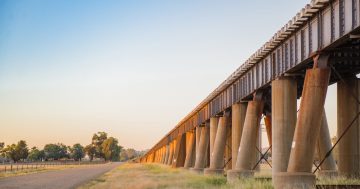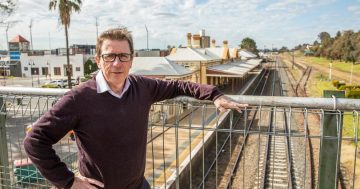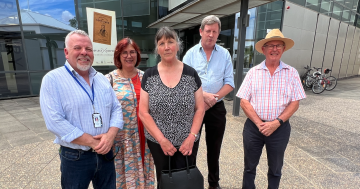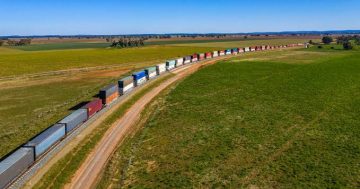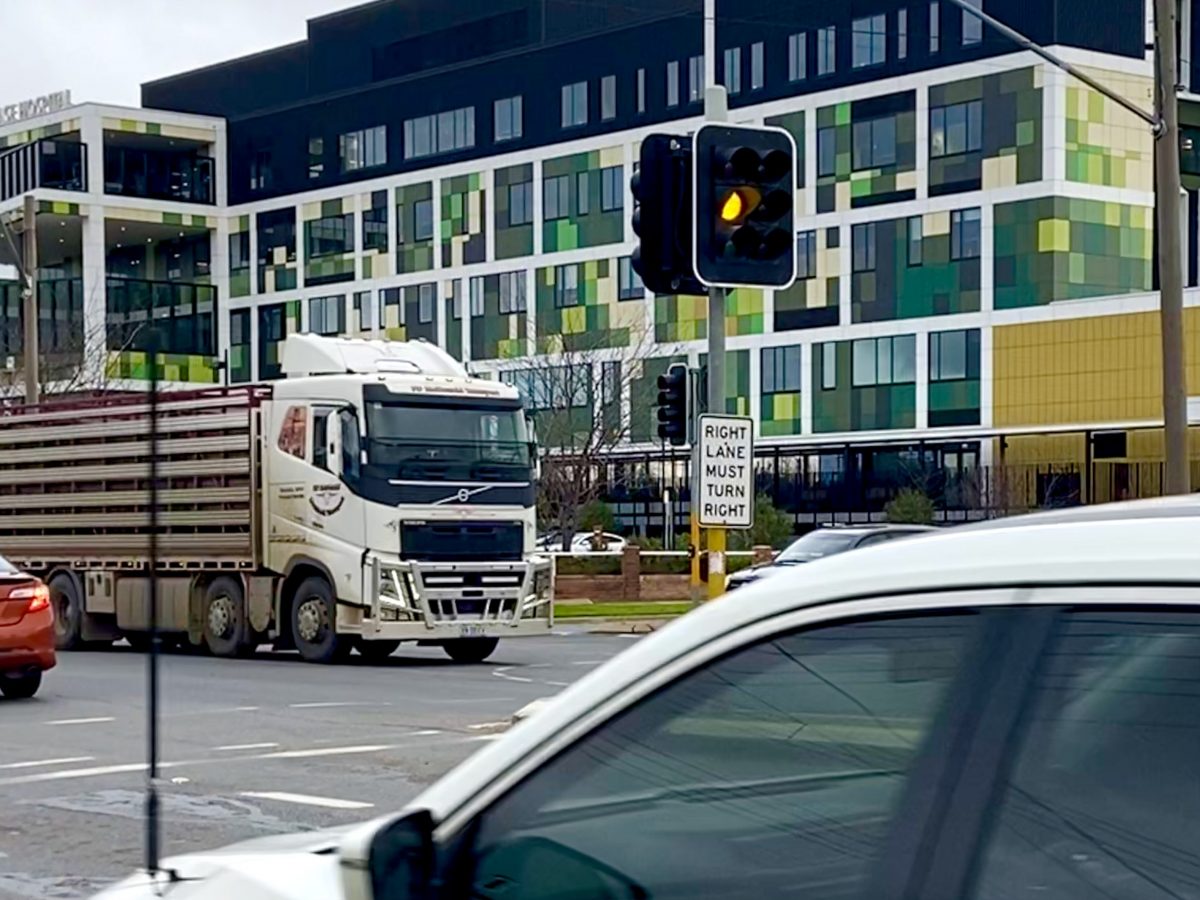
Traffic backing up from the Bourke Street level crossing has been raised as a concern. Photo: Chris Roe.
There’s now less than a week left for the public to respond to the Australian Rail Track Corporation (ARTC) plans to upgrade the line through Wagga’s CBD to facilitate double-stacked ‘super freighters’.
With community concerns over noise, vibration and traffic changes, residents are being urged to examine the Environmental Impact Statement (EIS) on the Albury to Illabo section and respond before the 28 September deadline.
On Monday, Wagga City Councillors endorsed a submission outlining their own concerns and identified “several fundamental problems with the accuracy and completeness of the assessment”.
While there remains broad support for the project, many are pushing for ARTC to consider bypassing the city rather than simply upgrading the existing line.
Councillor Richard Foley has been outspoken in his desire to avoid “large industrial trains roaring through the town” and fears the impact of extended delays at level crossings.
“I am absolutely 100 per cent behind the project and what it stands for, but for the life of me I can’t understand why you’d want to completely disrupt the amenity of this city,” he said.
“If you’re going to shut that road for up to eight minutes, if not longer, you’ll get people banked up hundreds of metres either side of the line with an ambulance or a fire truck desperate to get over there.”
Potential delays for emergency vehicles at the Bourke Street crossing have been regularly cited by critics of the plan, however, according to those at the wheel, this is unlikely to be a problem.

First responders say the Inland Rail is unlikely to impact their ability to transfer patients across the city. Photo: Julia Gomina.
First responders from both Fire and Ambulance told Region that the public would not be placed at risk as they are always making “dynamic risk assessments” in traffic, particularly when it comes to level crossings.
A closure of eight minutes is unlikely to cause delays as drivers are already alert to the potential need to take an alternative route and it is easy to turn in the vacant lane when the boom gate is down.
They said peak traffic times are of far greater concern and the Gobbagombalin Bridge presents a riskier proposition as there are few options to manoeuvre.
When emergency vehicles are required to cross the rail line, the Edmondson Street, Lake Albert Road and Pearson Street Bridges are always factored in.
The required raising of the Edmondson Street bridge will see it out of action for nine months during construction, but this would proceed the increased rail traffic.
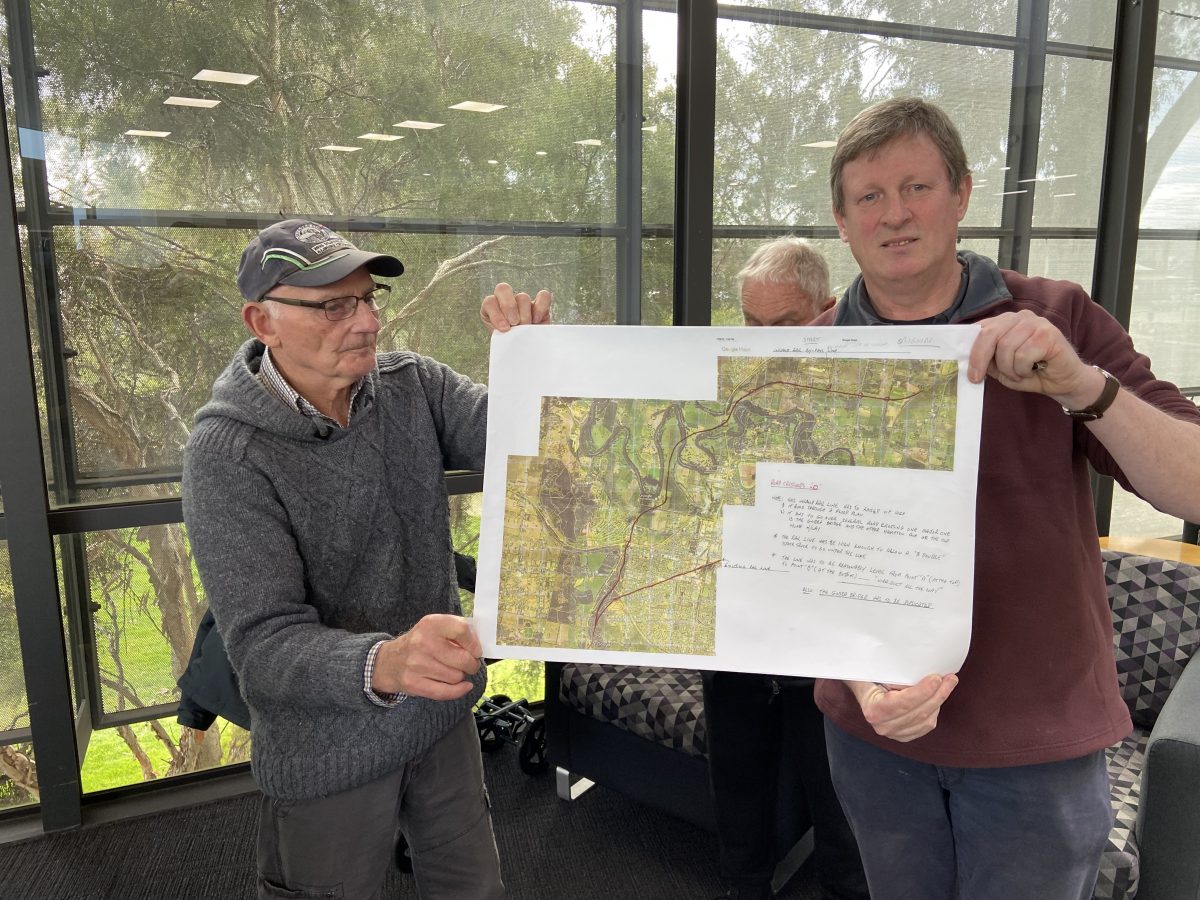
Wagga Ratepayers Chris Roche (right) with a map displaying a possible western bypass. Photo: Patrick Morrow.
Chris Roche from the Wagga Ratepayers Society said the lowering of the track beneath the Pearson Street bridge will cause increased noise and impact nearby residents and property values.
“You’re going to get an increase in break compression noise as the train goes down, and then also as the train comes out of that, there will be increased noise from the extra power needed to pull the whole train,” he explained.
“We’re pushing for a bypass around the Wagga centre.”
While Mr Roche is advocating a western bypass linking Kapooka to Bomen, Cr Foley would prefer to see the rail passing the city to the east.
“You could split the line off somewhere between the Rock and Uranquinty and spur it through that country behind the tip over the back of the RAAF Base, down the gully, over the river and straight into Bomen,” he explained.
“That way, you’re ringing around the city and you keep it well away from the CBD in general.”
Both Cr Foley and Mr Roche are hopeful that ARTC can be persuaded to consider the bypass options and have cited an instance further north in Narromine, where the original plan to pass the town to the west was changed to the east in 2017.
The claim was that Gilgandra and Narromine shire councils had presented detailed responses along with community submissions and prompted ARTC to reconsider the alignment of the Inland Rail line at Narromine.
However, Narromine Mayor, Craig Davies was surprised by the suggestion that they had had any influence on ARTC’s planning.
“I know there were some submissions, but certainly it had no impact on their decision-making, I can guarantee you that,” he said, explaining that Narromine’s situation is quite different to Wagga’s as their portion of the Inland Rail corridor is a greenfield project that will pass no closer than 8 km from the town.
“I appreciate the challenge of Wagga’s scenario though,” he added.
Gilgandra Mayor Doug Batten was equally confused, explaining that the only concessions made were to mitigate potential problems on the floodplain.
“We had nothing to do with the alignment, that was a decision made by Inland Rail,” he said.
Narromine landholder Andrew Knop has been a long-time critic of the way the project has been handled and has been communicating with stakeholders in Wagga.
He began raising concerns over a lack of consultation after ARTC made the surprise decision to switch the alignment from the West to the East of the town in 2017.
“I decided to research into what the heck was going on here,” he explained.
“I discovered that they’d actually produced study area maps, which they then discarded and went with a site outside the study area and decided they were going to move the alignment into there without any consultation.”
Mr Knop conceded that the situation in Narromine is vastly different to Wagga where existing infrastructure will be used.
“It wasn’t ever going through the town here, that’s not like Wagga where they were going to use the brownfield alignment,” he said.
While he was able to clarify that ARTC had not shifted the Narromine line in response to community pressure, he did stress how important it was to speak up and hold them accountable.
He urged Wagga residents to make as many individual submissions as possible, to ensure that all concerns and options would be properly addressed.
“They (ARTC) have to do a response to all submissions,” he said.
“If you don’t put them in, it gets noticed, so the more numbers that object to a project the more the minister has to look at it.”
Wagga Wagga City Council’s Inland Rail A21 EIS response can be read here.
Original Article published by Chris Roe on Region Riverina.








